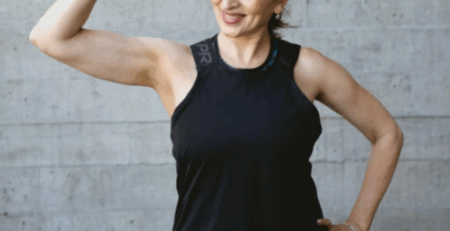Certain breathing techniques before exposure to the cold, such as a cold plunge, can help to adequately prepare the body for this challenge and significantly mitigate the effects of the cold. This means, for example, that you can warm yourself up internally so that you can stay in the ice bath tub for longer or make it easier for you to get in.
Table of Contents
Why Breathing Matters Before A Cold Plunge
Targeted breathing prepares your body for the cold:
- Improved oxygen absorption – supports circulation and increases body temperature
- Stronger immune system – breathing stimulates the release of hormones like adrenaline and noradrenaline.
- Reduced pain perception – cold feels less overwhelming as stress hormones rise.
- Mental focus – steady breathing helps you stay calm and present as your body adapts.
Types of Breathing Techniques
- Belly breathing: With belly breathing, the breath is taken deep into the belly so that the belly expands when you breathe in and contracts when you breathe out. This technique is also helpful for reducing stress and relaxing.
- Chest breathing: In chest breathing, the breath is taken into the upper part of the lungs so that the chest expands when inhaling and contracts when exhaling. This technique helps to deepen breathing and increase lung capacity. It is used, for example, by divers or cold water swimmers before a dive.
- Alternate breathing: Alternate breathing involves breathing alternately through the left and right nostrils. This technique is often used in yoga practice to reduce stress and improve concentration.
- Deep breathing: With deep breathing, the breath is taken deep into the lungs and slowly exhaled again. This technique relaxes and focuses the mind, thereby also reducing stress.
- Kapalabhati: Kapalabhati involves breathing in and out quickly and rhythmically through the nose. The breath flows back naturally as you inhale and is not forced. Kapalahati breathing also helps to increase lung capacity and improve circulation.
The Most Effective Breathing Techniques for Cold Water Swimming

However, not every breathing technique is equally effective as preparation for ice bathing. We want to introduce you to the best breathing techniques that you can use to warm yourself up and get your “inner fire” blazing:
Kapalabhati Breathing
Kapalabhati breathing originates from the traditional Indian practice of pranayama and is also known as “skull cleansing”. The skin can detoxify better. The body becomes over-acidic due to a poor diet; Kapalabhati is alkaline. It is best to incorporate it into your morning routine right away, after which you will have a very calm and even breath. It’s best to do this on an empty stomach, as the abdomen is strained.
Kapalabhati breathing involves a quick series of short, powerful exhalations followed by a passive inhalation. This warms up the body and stimulates the circulation. Kapalabhati is therefore passive inhalation and active exhalation.
Instructions for Kapalabhati Breathing
- Sit comfortably on a chair or on the floor with your legs crossed in the lotus position. Make sure your back is straight and upright, and your shoulders are relaxed.
- Close your eyes and take a few deep breaths in and out to relax.
- Inhale deeply and then exhale very quickly and forcefully through your nose, pulling your diaphragm inwards and upwards.
- Let your inhalation be passive and let the breath flow back into the body on its own.
- Perform this exhalation technique in a fast but controlled rhythm. Take approx. 50 to 60 powerful breaths per minute.
- Repeat Kapalabhati breathing for 1 to 5 minutes, depending on your experience and comfort level.
- End the exercise by breathing in and out deeply and normalizing your breathing again.
10-14 breaths per minute, with Kapalabathi, this increases to 60 breaths or even up to 120 breaths per minute.
Note: Kapalabhati breathing should be avoided if you are pregnant or have recently had abdominal surgery. You should also avoid it if you suffer from high blood pressure.
Ujjayi Breathing
Ujjayi breathing is also commonly used in yoga and involves breathing evenly and deeply through the nose, directing the airflow through the larynx, and creating an audible hiss. Ujjayi breathing relaxes and warms the body and sharpens your focus. This breathing technique is also known as “victorious breathing”.
Instructions for Ujjayi Breathing
- Sit comfortably, either on a chair or on the floor with your legs crossed. Make sure your back is straight and upright, and your shoulders are relaxed.
- Close your eyes and take a few deep breaths in and out to relax.
- Breathe in and out through your nose. Make sure that your breathing is even and calm.
- Concentrate on your throat and larynx. Imagine you are holding a mirror in front of your mouth and try to control your breath so that it becomes audible.
- Contract your throat and open your pharynx to produce an audible sound similar to the sound of the sea or snoring.
- Breathe in and out through your nose and try to maintain the audible sound on both breaths.
- Perform the breathing for 5 to 10 minutes.
- Finish the exercise by breathing in and out deeply to normalize your breathing.
Note: Ujjayi breathing should be avoided if you suffer from high blood pressure, heart problems or asthma.
Wim Hof Breathing
Wim Hof breathing is a breathing technique developed by Wim Hof, also known as “The Iceman”. It is a technique that is used to activate the body and calm the mind.
Instructions for Wim Hof Breathing
- Sit down comfortably. Make sure your back is straight and upright, and your shoulders are relaxed.
- Breathe in and out deeply to relax.
- Inhale deeply through your nose or mouth, fill your lungs completely with air, and then exhale quickly and forcefully through your mouth. Breathe out as much air as possible so that your lungs are completely empty.
- Breathe in deeply again and repeat the powerful exhalation cycle. Breathe out until you feel that nothing more is possible. Hold your breath when you have exhaled.
- Then breathe in deeply again and hold your breath for 10-15 seconds. Then exhale and start again.
- Do this breathing for 3 to 5 rounds.
- Breathe in deeply after the last round and hold your breath for as long as possible.
- Then breathe out again and hold your breath for a few seconds before breathing normally again.
Note: When you start with Wim Hof breathing, you should take it slowly and increase it gradually to avoid injury. It can also happen that you get a little dizzy. You should therefore not perform the breathing technique in the water, but always have solid ground beneath you.
Bhastrika Breathing
Bhastrika breathing is similar to Kapalabhati breathing and involves a rapid sequence of short, powerful breaths through the nose, followed by a deep inhalation. Bhastrika breathing can help to warm the body and improve circulation. It is also known as “bellows breathing”.
Instructions for Bhastrika breathing
- Sit comfortably, either on a chair or on the floor with your legs crossed. Make sure your back is straight and upright, and your shoulders are relaxed.
- Breathe in and out deeply to relax.
- Breathe in and out quickly and forcefully through your nose. Make sure that your abdomen expands when you inhale and contracts again when you exhale.
- Keep your breathing rhythm constant and even. Breathe as quickly as possible, but without straining.
- Continue breathing for 20 to 30 seconds before taking a short break.
- Repeat the Bhastrika breathing for 3 to 5 rounds.
- End the exercise by breathing in and out deeply and normalizing your breathing again.
Note: Bhastrika breathing should be avoided if you suffer from high blood pressure, heart problems, or asthma.
Tummo breathing
Tummo breathing, also known as “inner fire”, is an advanced breathing technique practiced within the Tibetan yoga tradition. It is a technique used to activate the body and mind. Wim Hof breathing is based on Tummo breathing.
Instructions for Tummo breathing
- Sit comfortably, either on a chair or on the floor with your legs crossed.
- Breathe in and out deeply to relax.
- Breathe in deeply and hold your breath. Visualize the energy gathering in your body and rising up through your spine.
- Breathe out forcefully through your mouth and concentrate on the energy spreading through your body.
- Repeat the inhalation and exhalation cycle several times, concentrating on the energy in your body each time.
- As you breathe, visualize the fire being ignited in your abdomen and spreading through your body.
- Concentrate on the energy that flows through your body and warms you.
- End the exercise by breathing in and out deeply and normalizing your breathing again.
Note: Tummo breathing is an advanced technique and should only be practiced under the guidance of an experienced teacher. It is important to start slowly and carefully with this technique and gradually increase it to avoid injury. Avoid performing this breathing in water or while driving. It is also not recommended to perform Tummo breathing if you are pregnant or have certain health problems.
Mammalian Dive Reflex
The “Mammalian Dive Reflex” (also known as the diving reflex) is an automatic response of the body to immersion in cold water. It is an innate protective response that is present in many mammals, including humans.
This reaction involves several physical changes, including a slowing of the heartbeat, a constriction of blood vessels in the arms and legs, and an increase in blood flow to the brain and heart. The body tries to get oxygen and blood to vital organs to protect them.
Breathing can be temporarily suppressed during the diving reflex. This is a protective reaction to prevent water from entering the lungs. The airways are closed, and the diaphragm is pushed upwards to protect the lungs.
It is important to note that the Mammalian Dive Reflex is not sufficient to protect the body from damage caused by prolonged diving in cold water. It should always be performed with caution and only under the supervision of experienced divers or medical professionals.
Recommended Breathing Approach
When cold plunging, the right breathing technique can help to relax the body and regulate the reaction to the cold environment. You can also generate an inner warmth so that you can stay in the cold plunge longer and more easily.
More experienced cold plungers do not do these breathing techniques before every cold plunge, but for beginners, it is a good idea to learn a breathing technique as mental and physical preparation and practise it for about 10 minutes before the cold plunge. Wim Hof and Tummo breathing are particularly suitable for this.
It is important that you breathe calmly and evenly during cold plunging, even without a breathing technique. The tendency to gasp (see mammalian reflex) is particularly common among inexperienced cold plungers. So if you can control your breathing and keep it steady, you will notice your body and mind calm down and gradually start to accept the cold. If you do this correctly, you will have taken the most important step on the way to cold plunging.







Leave a Reply